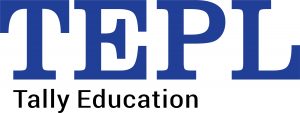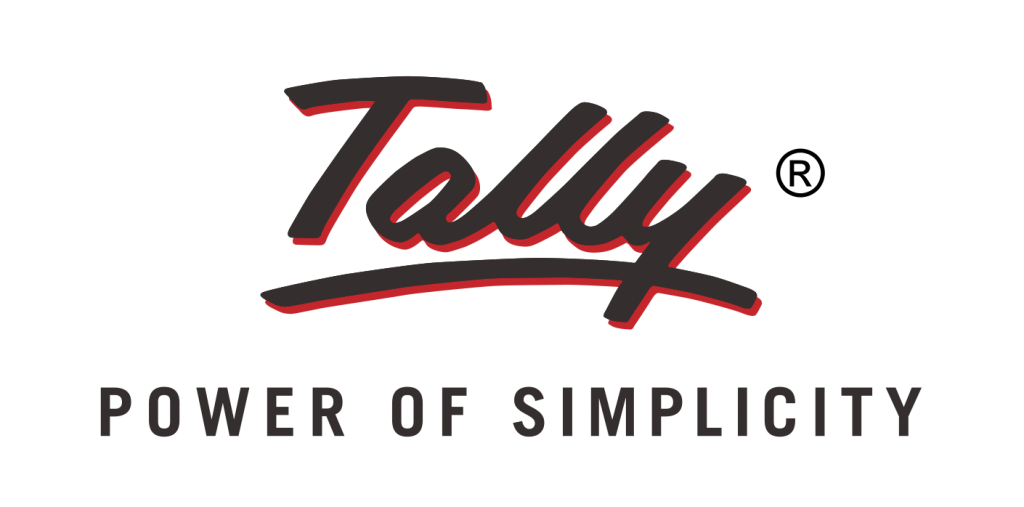Home >> TallyEssential Oman
About the Course
TallyEssential is the course created for professional growth of beginners in the Accounting and Finance field. This certification helps learners understand fundamental to advanced financial accounting concepts, using TallyPrime, the most user-friendly and popular business management tool.
The various modules include step-by-step explanations for topics like GCC VAT using Tally, maintaining chart of accounts, recording business transactions, managing accounts payable and receivable, managing cost/profit centres, managing purchase and sales orders, and creating financial reports.
The course has three distinct learning levels: Level 1, Level 2, and Level 3. Learners have the option to choose either one of them or opt for a comprehensive course.
After completing the course, learners will be competent in subjects including taxation, compliance, accounts payable and receivable, and recording and reporting.
For more information and to sign up for this certification, locate a partner nearby.


Course Detail
TallyEssential course covers topics from fundamental to advanced financial accounting concepts. It is available in three levels. Enclosed below are the topic details covered under each level:
Level 1
Chapter 1: Fundamentals of Accounting
1.1 Introduction to Accounting Information Systems 1.1.1 What Is Accounting? 1.2 Accounting Theories And Concepts 1.2.1 Accounting Theory 1.2.2 Accounting Principles 1.2.3 Accounting Standard 1.2.4 Accounting Convention 1.2.5 Accounting Policies 1.2.6 Principles-Based vs. Rules-Based Accounting 1.3 Accounting Methods: Accrual Vs. Cash 1.4 Accounting Oversight And Regulations 1.4.1 Financial Accounting Standards Board (FASB) 1.4.2 Generally Accepted Accounting Principles (GAAP) 1.4.3 International Financial Reporting Standards (IFRS) 1.4.4 IFRS vs. GAAP 1.4.5 US Accounting vs. International Accounting 1.5 Accounting Systems And Record Keeping 1.5.1 Chart of Accounts (COA) 1.5.2 Journal 1.5.3 Double Entry 1.5.4 Debit 1.5.5 Credit 1.5.6 Closing Entry 1.5.7 Invoice 1.6 Financial Statements 1.6.1 Understanding the Cash Flow Statement 1.6.2 Breaking Down The Balance Sheet 1.6.3 Understanding the Income Statement 1.7 Corporate Accounting 1.7.1 Accountant 1.7.2 Financial Accounting 1.7.3 Financial Accounting and Decision-Making 1.7.4 Corporate Finance 1.7.5 Financial vs. Managerial Accounting 1.7.6 Cost Accounting 1.8 Accounting For Inventory 1.8.1 Inventory Accounting 1.8.2 First In, First Out (FIFO) 1.8.3 Average Cost Method 1.9 Depreciation 1.9.1 Methods for Depreciation 1.10 Computerised Accounting 1.10.1 Advantages of Computerised Accounting 1.10.2 Accounting Structure for computerised accounting Conclusion Key takeaways Practice Exercises |
Chapter 2: Introduction to TallyPrime
2.1 Introduction 2.2 Features of TallyPrime 2.3 Downloading and Installation of TallyPrime 2.4 Types of Licenses in TallyPrime 2.5 Activate New License 2.6 Reactivate License in TallyPrime 2.7 Use License from Network in a Multiuser Environment 2.8 Working TallyPrime in Educational Mode 2.9 Company Creation and Setting up Company Features in TallyPrime 2.10 Getting Started with TallyPrime 2.10.1 Navigating from Anywhere to Anywhere in TallyPrime 2.10.2 F12 Configuration in TallyPrime 2.10.3 Alter Company Details 2.10.4 Shut the Company Conclusion Key Takeaways Practice Exercises |
Chapter 3: Maintaining Chart of Accounts
3.1 Introduction
3.2 Chart of Accounts
3.3 Creation of Masters in TallyPrime
3.3.1 Accounting Masters
3.3.2 Inventory Masters
3.4 Alteration of Masters in TallyPrime
3.5 Deletion of Masters in TallyPrime
3.6 Multi-Masters Creation and Display of Chart of Accounts
3.6.1 Multi Groups Creation
3.6.2 Multi Ledgers Creation
3.6.3 Multi Stock Groups Creation
3.6.4 Multi Stock Items Creation
Conclusion
Key Takeaways
Shortcut Keys
Practice Exercises
Chapter 4: Recording and Maintaining Business Transactions
4.1 Introduction 4.2 Recording Transactions in Tally 4.3 Recording Accounting Vouchers in TallyPrime 4.3.1 Receipt Voucher (F6) 4.3.2 Contra Voucher (F4) 4.3.3 Payment Voucher (F5) 4.3.4 Purchase Voucher (F9) 4.3.5 Sales Voucher (F8) 4.3.6 Debit Note Voucher (Alt+F5) 4.3.7 Credit Note Voucher (Alt+F6) 4.3.8 Journal Voucher (F7) 4.4 Supply Chain 4.4.1 Types of Suppliers 4.5 Inventory Management 4.5.1 Terms Used in Inventory Management 4.6 Recording Inventory Vouchers in TallyPrime 4.6.1 Stock Journal Voucher (Alt+F7) 4.6.2 Physical Stock Voucher (Ctrl+F7) 4.7 Bank Reconciliation Conclusion Key Takeaways Shortcut Keys Practice Exercises |
Chapter 5: Generating Financial Statements and MIS Reports
5.1 Introduction
5.2 Final Accounts Reports in Tally
5.2.1 Trial Balance
5.2.2 Profit and Loss Account
5.2.3 Balance Sheet
5.2.4 Cash Flow & Fund Flow Analysis Report
5.2.5 Receipts and Payments
5.3 MIS Reports in Tally
5.3.1 Stock Summary Analysis
5.3.2 DayBook
5.3.3 Cash and Bank Book
5.3.4 Purchase Register
5.3.5 Sales Register
5.3.6 Journal Register
5.4 Bird’s eye view/Drill down display from anywhere to anywhere
Conclusion
Key Takeaways
Shortcut keys
Practice Exercises
Level 2
Chapter 1: Accounts Receivable and Payable Management
1.1 Introduction 1.2 Accounts Payable and Receivable 1.3 Maintain Bill-wise Entry 1.4 Activation of Bill-wise Entry 1.4.1 Usage of Bill-wise entry in Purchase and Payment Voucher 1.4.2 Usage of Bill-wise entry in Sales and Receipt Voucher 1.4.3 Usage of Bill-wise entry in Payment and Receipt Voucher 1.4.4 Usage of Bill-wise entry – On Account 1.5 Specifying of Credit Limit for Parties 1.6 Payment Performance of Debtors 1.7 Bills Payable and Receivable Reports in TallyPrime 1.7.1 Bills Receivable 1.7.2 Ageing Analysis of Outstanding 1.7.3 Generating Reminder Letter in TallyPrime 1.7.4 Generating Confirmation of Accounts in TallyPrime 1.7.5 Bills Settlement 1.7.6 Bills Payables Conclusion Key Takeaways Shortcut Keys Practice Exercises |
Chapter 2: Cost/Profit Centres Management
2.1 Introduction
2.2 Cost Centre and Cost Categories
2.2.1 Activation of Cost Centre
2.2.2 Allocation of Expenses and Incomes using Cost Centre
2.3 Cost Centre Reports
2.3.1 Category Summary
2.3.2 Cost Centre Break-up
2.3.3 Ledger Break-up
2.3.4 Group Break-up
Conclusion
Key Takeaways
Shortcut Keys
Practice Exercises
Chapter 3: Purchase and Sales Order Management
3.1 Introduction 3.2 Purchase Order Processing 3.2.1 Recording of Purchase Order 3.2.2 Recording of Receipt Note Voucher 3.2.3 Recording Rejections Out Voucher 3.2.4 Recording Purchase Voucher 3.2.5 Recording Debit Note Voucher 3.2.6 Recording Payment Voucher 3.3 Sales Order Processing 3.3.1 Recording of Sales Order In TallyPrime 3.3.2 Recording Delivery Note Voucher 3.3.3 Recording Rejections In Voucher 3.3.4 Recording of Sales Voucher 3.3.5 Recording Receipt Voucher 3.4 Order Outstandings 3.4.1 Sales Order Outstanding 3.4.2 Purchase Order Outstanding 3.4.3 Pre-Closure of Orders Conclusion Key Takeaways Shortcut Keys Practice Exercises |
Chapter 4: Data Security
4.1 Introduction
4.2 Security Control
4.3 Activation of Security Control
4.4 Creation of Security Levels (User Roles)
4.5 Creation of Users And Passwords for Company
4.6 Accessing the company using Security Levels
4.7 Auto Login
4.8 TallyVault
Conclusion
Key Takeaways
Shortcut Keys
Practice Exercises
Chapter 5: Company Data Management
5.1 Introduction
5.2 Backup of Company Data
5.3 Restoring of Company Data
5.4 Company Data Repair
Conclusion
Key Takeaways
Shortcut Keys
Practice Exercises
Level 3
Chapter 1: GCC VAT using TallyPrime
1.1 Introduction 1.2 VAT in GCC Countries 1.3 Why VAT? 1.3.1 Terminology Used in GCC VAT System 1.3.2 VAT Registration 1.3.3 Understanding of Different Types of VAT Supplies 1.4 GCC VAT Computation 1.5 VAT in TallyPrime 1.5.1Activation of VAT in TallyPrime 1.6 Recording of Gulf VAT Transactions 1.6.1 Accounting of Domestic Taxable Transactions at Standard Rate 1.6.1.1 Purchase of Taxable Goods 1.6.1.2 Sale of Taxable Goods 1.6.2 Accounting of Intra GCC Transactions 1.6.2.1 Intra GCC Supply – Export within GCC Countries 1.6.2.2 Intra GCC Purchase – Reverse Charge 1.6.3 Purchase Returns & Sales Returns 1.6.4 Accounting of Service Transactions 1.6.5 Purchase from an Unregistered Dealer 1.6.6 Inclusive of Tax 1.7 Printing of VAT Invoice 1.7.1 Tax Invoice print in English 1.7.2 Tax Invoice print in Arabic 1.7.3 Tax Invoice print in Bilingual 1.8 Payment of VAT to Tax Authority 1.9 VAT Reports Analysis 1.9.1 Tax Payment Reconciliation 1.9.2 VAT Return 1.9.3 Filing of Return Conclusion Key Takeaways Shortcut keys Practice Exercises |
Elements
Our courses include interactive and interesting content, concepts and content delivery to ensure you a delightful learning experience.
Hybrid-Learning Module
A Hybrid-learning module enables you to learn the course through text and interactive video content
Assessment
Assessment comprises of questions like: MCQs, match the following and image based questions
Certification
Industry- preferred certification will be provided to differentiate yourself among others and take your career to the next level
FREQUENTLY ASKED QUESTIONS
Most frequent questions and answers
This courseware is highly recommended for learners who aspire to build a successful career in Accounts, Finance or as an entrepreneur. To get enrolled for TallyEssential Oman, one must have completed secondary education.
Learners have to opt for in-person classes only.
After completing the certification, you’ll have a fundamental understanding of finance and accounting and the ability to apply that understanding to a variety of real-world scenarios, whether you’re using this knowledge in the field of business decision-making or as a student of finance/accounting for higher studies.
The assessment is necessary to complete the course and attain the specialization certificate which will help your career growth and enable you to showcase the certificate.
The assessment will be of 40 mins per level.
Locate a centre to Enroll
We have a wide network of partners across India and Middle East Countries
You can also locate a partner from our Tally Education App
Other Courses
Explore our various industry- preferred courses and certifications and select the one that suits your requirement.


Accounts Payable and Receivable Management using Tally
The specialization course on Accounts Payable and Receivable Management covers step-by-step instructions from fundamentals of credit management to managing outstanding management.


Cost Centre Management
This specialization course covers various concepts and its application related to Cost Centre and Strategy.


GCC VAT Using Tally
This international courseware covers end to end details on GCC VAT, its concepts and usage.


TallyEssential International
This international courseware is the complete guide on Basics to Intermediate Accounting with scenarios for international markets.



